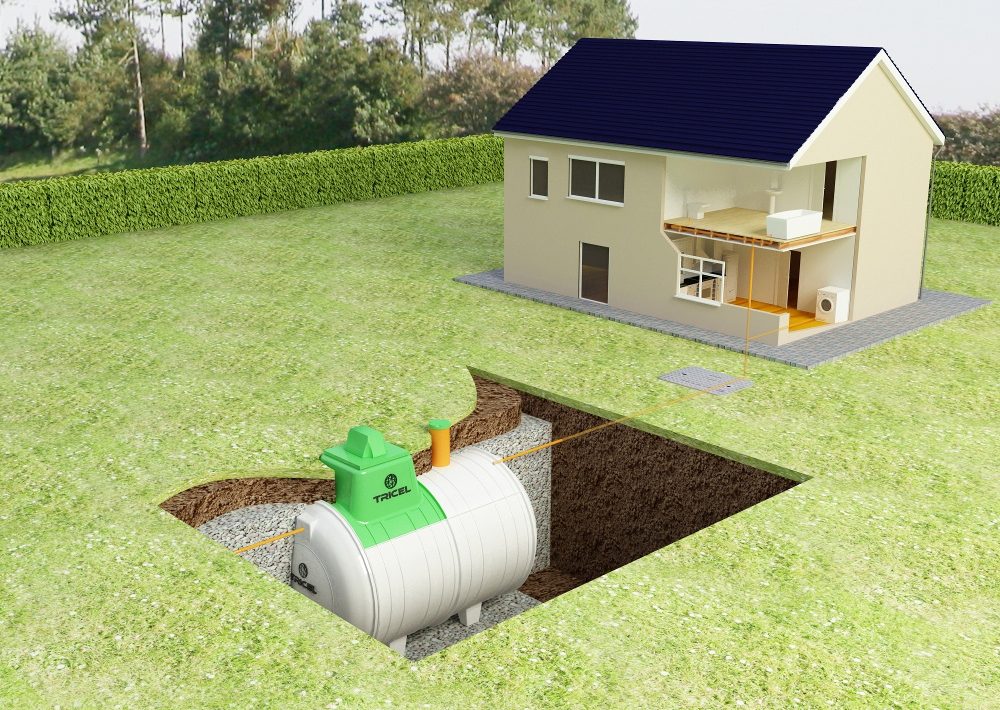A septic tank may be a significant financial investment for homeowners and businesses, but it is often the most practical option for waste removal. The price of a septic tank can vary considerably depending on the materials utilized, the time required to install it, the size of the system, and even where it’s installed.
There is no one-size-fits-all price for septic tanks. The expense of installing a septic system varies from job to job. However, certain factors can assist you in determining how much of an investment you’ll be making as well as whether you’ll get value for money.
To help you through the planning stage, we’ve put together this guide to septic tank installation costs. This guide breaks down the factors that can affect the price of your new waste disposal system.
How Much Do Septic Tanks Cost?
A septic tank is difficult to value. You’ll see that several variables impact the overall cost of a septic tank installation for a specific project. These elements include site, size, materials used in construction, labour, and design and planning expenses.
If you’ve never had a septic system before, keep in mind that long-term expenses will have to be accounted for. You’ll have to pay for servicing and emptying the tank every year, as well as any further repairs or maintenance work required to keep the tank running efficiently.
As a result, you’ll only receive an exact quote once a complete survey has been done and all of the variables have been evaluated.
Why Are Septic Tanks Important?
Setting up a septic tank may seem like a lot of work, but once they’ve been built and maintained, they take care of themselves in most cases.
Many areas of the country require septic tanks. However, that doesn’t mean you shouldn’t get a low-cost system with high value. Because certain places do not have access to public sewers in rural regions, septic tanks are frequently required. Septic tanks provide an excellent long-term off-mains waste disposal option in these rural
You may potentially save money on your sewerage charges and energy expenses in the long run, especially if you have a large commercial property. Sewerages and power rates are becoming increasingly more expensive throughout the world, which is why many individuals are turning to septic tanks as a private alternative to public systems. An excellent septic tank can also be considerably
Do You Have an Existing Septic Tank?
If you already have a septic tank, consider replacing it before looking at septic tank installation costs. Many old tanks may appear to need a complete replacement, but they may be repaired or improved by experts, which can save you money and time.
Every septic tank has an expiration date, and you’ll eventually need a replacement. Some of the existing groundwork may still be included in the new designs, which might save money. If you don’t have an old tank already installed, the expenses will be greater because there will be considerably more effort and planning of time.
What Factors Can Impact Septic Tank Installation Costs?
Septic Tank Size
The size of a septic tank is one of the most important elements when determining the overall cost of installation. The bigger the septic tank, the more it costs. Septic tanks have their limits; therefore, the size of the tank is one of the most essential aspects of design.
Septic tanks must be custom-made to contain a specific amount of waste. To be able to receive a certain number of people, your septic tank must have the capacity to hold that many individuals. A four-person family, on the other hand, would only need a tank with the capability to handle four people.
If you can afford it, a larger-capacity septic tank is always preferable to one with the exact capacity. This gives you flexibility in the future – maybe you’ll want to add another room, for example. As a result, there’s less likelihood of it filling up and running out of space.
Location of the Septic Tank
The expense of installation will differ depending on the tank’s location. The most important factor to consider is whether a septic tank will be placed above or below ground level.
Septic tanks are frequently installed underground, particularly in cramped regions. An underground septic tank allows you to continue using the above-ground area after the installation. Underground tanks are also harder to find and thus better at containing any unpleasant smells that may waft from the location.
Underground tanks are popular, but they are also more expensive. There is more planning involved, the location must be dug out safely, and obstacles such as stones or the water table must be avoided. Naturally, an underground septic tank will cost more than an aboveground version.
If you want to save money while still having enough room, an aboveground septic tank is a more cost-effective alternative. Because they are obvious, aboveground septic tanks are simpler to maintain since any problems will be visible right away. Aboveground sewage tanks are also easier to empty.
Drainage Systems (Area, Pipes, etc.)
The cost of constructing a septic tank is based on the amount of piping and drainage required. The more piping you’ll need if your building is farther from the tank. You’ll also need more piping if you’re servicing a greater number of people or employees.
If you need to dig drains or soakaways to discharge wastewater, you may anticipate septic tank installation costs to be higher. Overall expenses will also be influenced by whether you have existing infrastructure that can be utilized with the new septic tank design.
Materials Used in the Construction
The materials used in the project’s construction have an impact on the whole project’s costs, so it’s essential to think carefully about which ones you pick.
The most popular septic tank materials are plastic and concrete. Plastic is less expensive to produce and install. It may be transported more quickly than concrete, and it is simpler to set up. Concrete septic tanks are more costly to construct, but they endure far longer than plastic ones.
The Time Needed to Survey, Plan, Design, and Install a Septic Tank
Depending on the project, you may or may not have to pay for labour. This varies from one endeavour to the next; it is determined by a variety of criteria that influence how long it will take to finish the installation. You’ll have to cover costs for preliminary surveys, design time, and construction and installation time for your septic tank.
Additional Costs
According to your septic tank design, you may have extras that will increase the cost of installation. Some of these will be necessary, while others might be optional. A soakaway is a required addition if you want additional drainage in your garden. If you have a septic tank buried underground, risers for it are recommended but not necessary.
Septic Tank Maintenance Costs
The initial construction expenses, as well as long-term maintenance and repair costs, must be considered when deciding whether to install a septic tank on your property. Septic tanks are quite self-sufficient systems; in most cases, they may be left to operate on their own in the garden. However, they do require some attention from the
Finally, septic tanks must be emptied once a year. When solids and liquids are introduced to the tank, it separates the two. Although harmful chemicals will be broken down as the liquid wastewater leaves the tank, the solids will mostly remain and form a layer of sludge and slime at the bottom.
Sludge builds up over time and, if it is not removed, can eventually cause blockages, overflows, and inefficiencies. The ideal septic tank emptying occurs once a year. Pumping out the sludge is a difficult task that should be left to experts.
A professional can also inspect the septic tank for any severe issues that might cause breakdowns. A regular check-up can help you identify problems before they become costly repairs. However, if your tank is neglected, it may lead to significant damage that will leave you with a large repair bill in advance.
Overall, despite the ongoing maintenance expenditures, septic tanks may deliver excellent value for money. In many areas, especially in commercial settings or houses with multiple tenants, septic tanks can save you money when compared to municipal sewer costs.
Is it true that sewage treatment systems are more expensive than septic tanks?
Customers who are looking into purchasing a septic tank may also be concerned if they need a sewage treatment facility rather than a basic septic tank installation. In certain rural regions, sewage treatment plants may be required because their discharge is cleaner and can be returned to watercourses or sensitive environments.
Sewage treatment plants are considered to be more environmentally friendly than septic tanks because they can handle greater quantities of waste.
Overall, sewage treatment systems are more expensive to develop, install, and operate. They are more difficult to construct and maintain than septic tanks, necessitating the use of a motor and electricity to keep them operational. That also indicates there’s greater upkeep and more costly repairs if something goes wrong.
The average homeowner should expect to pay more than £3,000 for a septic system. The higher cost of a septic system necessitates that most individuals choose it over a sewage treatment plant in most circumstances and locations where sewage treatment plants are required (sewage treatment plants have advantages over septic tanks).
Contact OMDI Today for Your Free Quote
At https://www.omdi.co.uk/news/a-guide-to-septic-tank-installation-costs/OMDI, we can design, install, and maintain a variety of septic tanks that are certain to meet almost any needs and every budget. We can answer any additional questions you may have, as well as provide a more detailed cost analysis. If you need further information, please do not hesitate to contact us or email our friendly and professional





